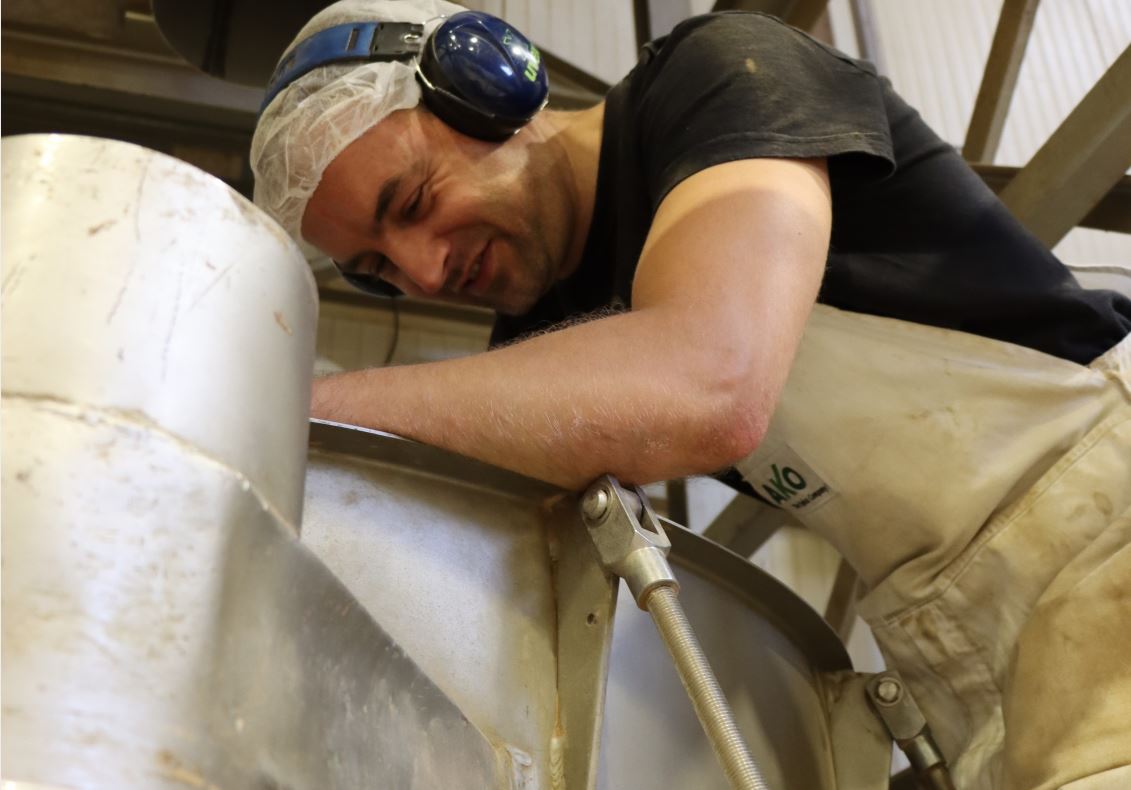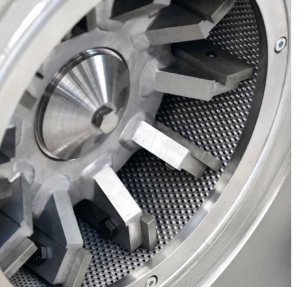Normally you can smell it when you come to work early in the morning and turn into Chemnitzer Straße in Ronnenberg: the touch of the fine aroma of pepper, piment, coriander or cloves. Fragrances from the far away countries that arouse appetite and desire to travel. Then the large mills of the AKO are already active, grinding spice grains into spice powder and thereby releasing the fine odours. And the spice millers from the production – who start working early in the morning at AKO – have put the large high-performance mills into operation and fill the large high mills with fresh spices from all over the world.
In the morning – two hours after the start of production – we like to test our young professionals still in the parking lot and let them smell and guess which spice will be processed again today. If they are wrong, then there is a joking rebuke from colleagues. If they are right: then we are proud with them, about the success of our sensor technology training!
Jensen is also proud of this case. He is head of the Grinding department. The young man with the mischievous gaze is a passionate miller and with body and soul. Jensen, (who is actually called differently, but does not want to be named here) is responsible for technology and safety. He looks after the five high-performance mills of AKO – which have nothing to do with the small Peugeot pepper mills on dining tables. Each mill is a small marvel, with upstream and downstream technology. And each mill is different: depending on which product it is used for. The mills run over several floors, some up to 8 meters high, grinding several thousand tons of spices and herbs for the European food industry every year.
Grinding Technology
The new mill is also such a marvel of technology – although it is rather unspectacular when delivered and the technology behind it seems simple. The German brand is a so-called sieve basket mill: an engine-driven impact tool – e.g. a rotor or a disc – crushes the spices and presses them through a hole sieve at high speed. This is good: especially for fibrous spices such as ginger roots or cardamom, which always cause a high product loss during grinding, because they have a high proportion of plant tissue in the root or capsule.
It is then rather complicated at the interfaces of the mill: the fully automatic supply via a conveyor system, the fixed anchorage on the eight-metre high scaffolding and the connection to the downstream screening system, which works with different screens depending on the spice.
With the quantities that pass through here every day, Jensen says, the interfaces are always the weak points. It just has to run.
This is also found by the company’s quality management officer, Juliane S.. The young woman from the administration has to put the new machine through its paces after installation and before commissioning: because food safety plays a major role in the company.
Juliane S.: Safety and quality are just my passion and are close to my heart. I am responsible for ensuring that our products leave the house safely and in good quality. That’s why I check the machine and the individual work steps from commissioning, cleaning to maintenance, which is a matter of several days and a major project for quality management!
Ultimately, the project planners from AKO, Moritz Richter and the deputy production manager are also proud of the new technical achievement. Both had to bring together the requirements, the technology and the budget in the selection of the new mill and coordinate the various trades in such a way that the production operation did not have to be interrupted for too long.
Even more innovations
According to Moritz Richter, Junior Chief of the AKO, the new mill is just the beginning. We are looking to drive the company forward with many innovations.



